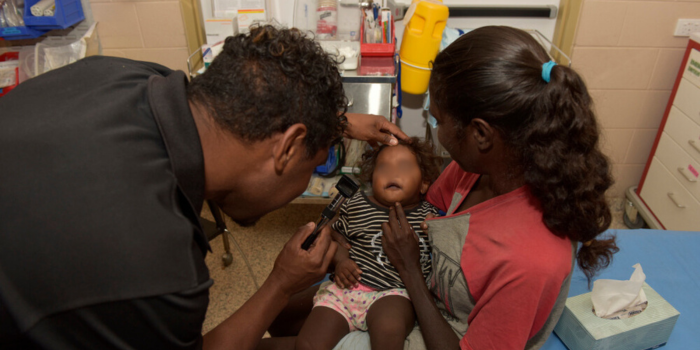Childhood obesity points to looming health crisis for future generations

Overnutrition is becoming increasingly common, with many children now struggling with obesity and type 2 diabetes.
When Dr Micah Mwangi Kibera told the parent of a 13-year-old girl that her weight did not align with her age, the response he got surprised him. Instead of showing concern, the parent became angry and defensive, turning the occasion into a tense confrontation.
Obesity in children is increasingly becoming a problem the world over, leading to many grappling with its effects, mainly lifestyle diseases like obesity and diabetes, which previously were seen to affect adults.
More To Read
- UNICEF: Childhood obesity in Africa rising, surpassing underweight cases globally
- Artificial sweeteners may speed up brain ageing and raise health risks, research shows
- New study links smartphone use on the toilet to rising haemorrhoid cases
- As August temperatures drop, here is why you need a sauna or steam bath
- Ozempic and other weight-loss drugs linked to rare but serious eye conditions
- Study finds patients quickly regain weight after coming off Ozempic
Lucy Muthoni from Meru recalls how her younger sister endured bullying throughout her life due to her weight.
"Growing up in the village, it was heartbreaking to watch my sister being bullied by teachers at school and in the entire village. It pained our hearts, but we didn’t know how to help her; we thought it was just her body," Muthoni said.
This severely affected her sister’s self-esteem and her interactions with others.
Muthoni recalled that, at an early age, her sister would often serve herself two plates of food, but the family was not concerned about it. They did not take her to the hospital for a check-up; they just embraced her and tried their best to protect her.
The family did all it could to protect her self-esteem, encouraging her to exercise, but it didn’t change much.
Muthoni said her sister faced several challenges, including panting, and preferred staying indoors rather than playing outside. Her habit of eating a lot of food followed her into adulthood.
What Muthoni’s sister was experiencing was overnutrition or childhood obesity, which is becoming increasingly common, with many children now struggling with obesity and type 2 diabetes.
According to Kibera, a clinical nutritionist in Nairobi, malnutrition manifests in two forms. The first one is undernutrition, where children have nothing or little to eat, and overnutrition, where children eat too much.
Kibera said both extremes are not good.
He said parents should act when they realise a child's height is typical for their age but their weight resembles that of an adult. This is because over-nourished children can become over-nourished adults, exposing them to various diseases.
He said cases of diabetes in children and adolescents are on the rise in the country, revealing that he has dealt with the case of a 13-year-old.
"It's only a matter of time before we see even younger cases, which will pose significant challenges," he said.
He said parents should heed advice from paediatricians when concerns about their children's weight are raised.
"Sometimes, parents may misinterpret our concerns as an attack on their parenting skills. We want the best for your child,” he said.
Children should also engage in outdoor activities, he said.
At the same time, Kibera said parents should teach healthy eating habits to their children, besides being good examples to them.
He noted that obesity can lead to various health issues including structural conditions like arthritis, sleep apnea, snoring, and poor muscle recovery due to inadequate sleep, which tend to worsen with weight gain. Overweight children often experience frequent hunger and mood swings.
 A stock photo of an obese baby (Photo: Shutterstok)
A stock photo of an obese baby (Photo: Shutterstok)A stock photo of an obese baby (Photo: Shutterstok)
Being overweight and obese arises from an imbalance between energy intake (diet) and energy expenditure (physical activity). Obesity, characterised by excessive fat accumulation, is a chronic and complex disease that can significantly impair health. It increases the risk of developing type 2 diabetes, heart disease, and certain cancers and can affect bone health, reproduction, and overall quality of life, including sleep and mobility.
Diagnosing obesity involves measuring weight and height to calculate the body mass index (BMI). Additional assessments like waist circumference help refine the diagnosis, with BMI thresholds varying by age and gender, particularly for infants, children, and adolescents.
In low- and middle-income countries, children face vulnerabilities related to inadequate prenatal, infant, and early-childhood nutrition. They are also exposed to high-fat, high-sugar, high-salt, energy-dense, and nutrient-poor foods, which are affordable but lacking in nutritional quality.
Coupled with low levels of physical activity, these dietary patterns contribute to rising rates of childhood obesity alongside persistent undernutrition challenges.
Obesity is often multifactorial, influenced by obesogenic environments, psychosocial factors, and genetic predispositions. While some cases may be linked to specific causes such as medications, diseases, immobilisation, or genetic syndromes, the broader global trend reflects complex interactions of lifestyle, environment, and genetic factors.
According to the 2020 Global Nutrition Report, Kenya’s progress towards global nutritional targets is notable. However, the country faces challenges in meeting diet-related non-communicable disease (NCD) targets.
Obesity prevalence stands at 13.4 per cent among adult women and 3.6 per cent among adult men, lower than the regional averages of 20.8 per cent for women and 9.2 per cent for men.
Diabetes affects an estimated 7.3 per cent of adult women and 7.0 per cent of adult men, highlighting ongoing health concerns despite efforts to improve nutritional outcomes.
According to the World Health Organisation (WHO), the prevalence of adult obesity has more than doubled since 1990, while adolescent obesity has quadrupled.
WHO notes that by 2022, approximately 2.5 billion adults aged 18 years and older were overweight, with 890 million classified as obese.
Among children under 5 years old, an estimated 37 million were overweight in 2022, with rising rates particularly notable in low- and middle-income countries. In Africa, the number of overweight young children has risen by nearly 23 per cent since 2000.
For children and adolescents aged 5-19 years, over 390 million were overweight in 2022, representing a significant increase from just 8 per cent in 1990 to 20 per cent.
Both boys and girls showed similar increases, with 19 per cent of girls and 21 per cent of boys classified as overweight in 2022.
The prevalence of childhood obesity has also risen, from 2 per cent in 1990 to 8 per cent in 2022, affecting approximately 160 million young people globally.
These trends underscore the multifaceted factors contributing to the global obesity epidemic, including dietary habits, physical activity levels, and environmental influences.
Top Stories Today
- Lecturers told to call off strike as government cites court order
- Activists seek ban on toxic pesticides linked to cancer, environmental harm
- "This is why I’m resigning": Githurai MCA cites broken promises, delayed projects
- Nairobi splashes Sh863 million on travel as development funds stall
- Police arrest suspected bandit, recover AK-47 in Garissa shootout
- Kenya to implement instant fines for traffic violations to curb road deaths














































